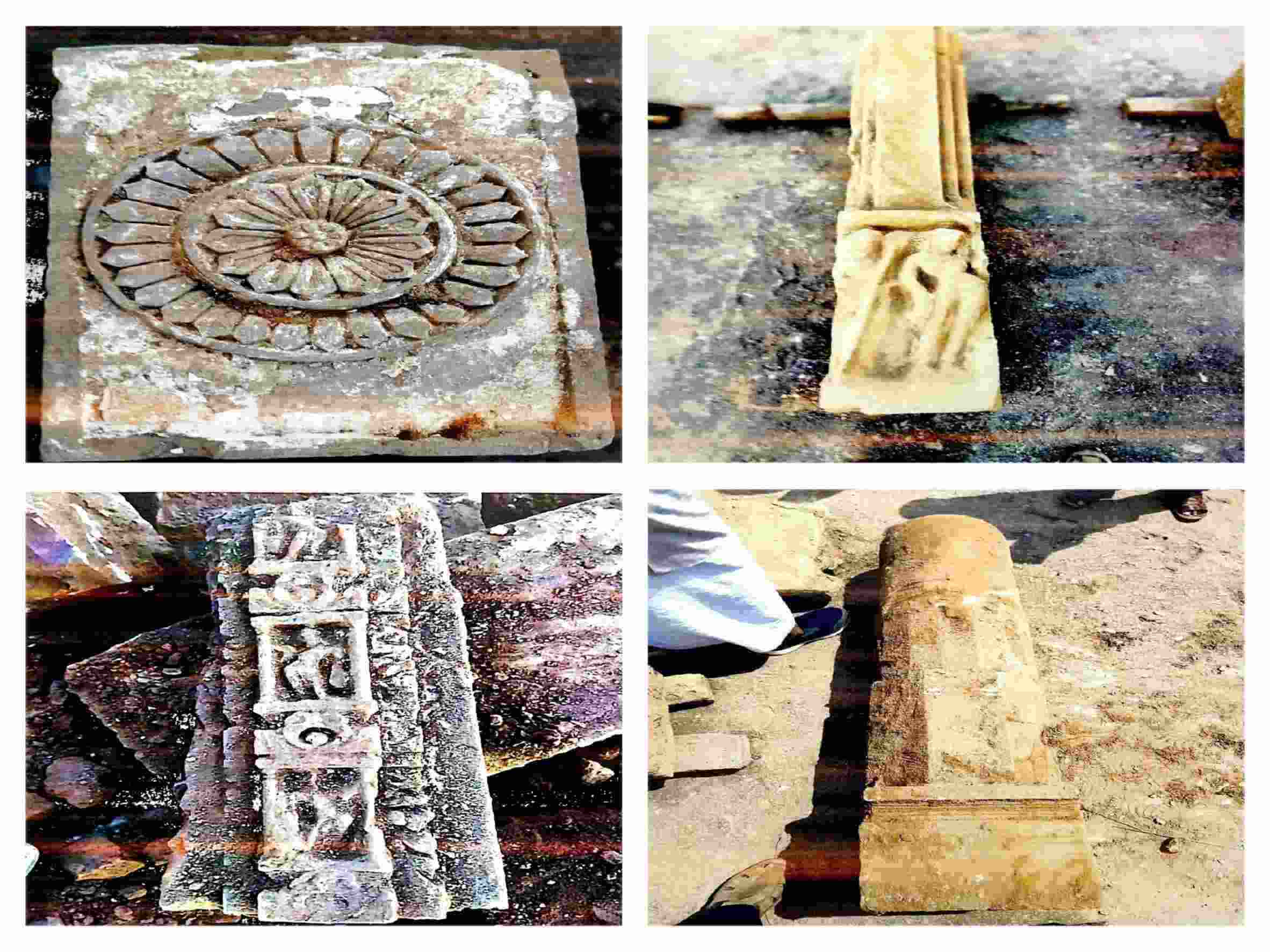
Idols, Shivalinga found at Ayodhya site; netizens claim Buddhist heritage
A shivalinga, broken idols and other artefacts were unearthed recently during levelling of the site for a Ram temple, the trust charged with its construction said.

A shivalinga, broken idols og gods and goddesses, and other artefacts were unearthed recently during levelling of the site for a Ram temple, the Shri Ram Janmabhoomi Teertha Kshetra Trust said.
The levelling work using heavy earth moving machinery began on May 11, the trust charged with the construction of the Ram temple trust said in a statement.
The trust reported that a five-foot shivalinga, seven black touchstone pillars, six red sandstone pillars, a flower pinnacle, and four broken idols of gods and goddesses were found.
The trust also posted pictures and videos of the artifacts it said were recovered during the levelling process.
Uttar Pradesh government agencies including Public Works Department (PWD) and Power Corporation are involved in the construction process, along with at least one private firm.
“The work has resumed after due permission from district authorities and is likely to gain pace after the lockdown. The trust will soon call a meeting of its members before expediting the construction of the Ram temple,” its secretary Champat Rai said.
A Buddhist group, which had filed a petition in the Supreme Court claiming that the site was once a stupa, has demanded that the levelling by heavy machinery should be stopped and excavation of the area done by the Archaeological Survey of India to avoid tampering with any evidence.
Vineet Maurya, who had lodged the petition as member of the Buddhist community, said they would approach the Supreme Court with a fresh petition now.
Meanwhile, netizens have erupted on social media, claiming that the evidence gathered so far pointed at the fact that the land was once owned by Buddhists, and that the United Nations Educational, Scientific and Cultural Organization (UNESCO) should handle the excavation at the site to ensure unbiased revelations.
Support this demand of Acharya Shanti Swarup Buddhist- "Every stone found in the excavation of Ayodhya is a part of the Buddhist heritage. Therefore, the fair excavation of this place should be done under the supervision of @UNESCO."#बौद्धस्थल_अयोध्या pic.twitter.com/zd2AFrHGuP
— Dr. M.S. (@Dr_M_S_) May 21, 2020
ASI in its report mentions presence of stupas & pillars at disputed site from pre-mosque era.
ASI reports confirm Buddhist link to Ayodhya, which is identified by many historians as ancient India's Saket, a renowned Buddhist center.#बौद्धस्थल_अयोध्याhttps://t.co/KVPn9iFrSY
— Bahujan India (@MyselfViraj) May 21, 2020
In a historic verdict last November on the Ramjanmabhoomi-Babri Masjid dispute, the Supreme Court had ruled in favour of construction of a temple. It also ordered that an alternative five-acre plot must be found for a mosque within Ayodhya.
The 16th-century Babri mosque that stood on the disputed site in Ayodhya was demolished in 1992 by kar sevaks claiming that originally there was a Ram temple at the same spot.


